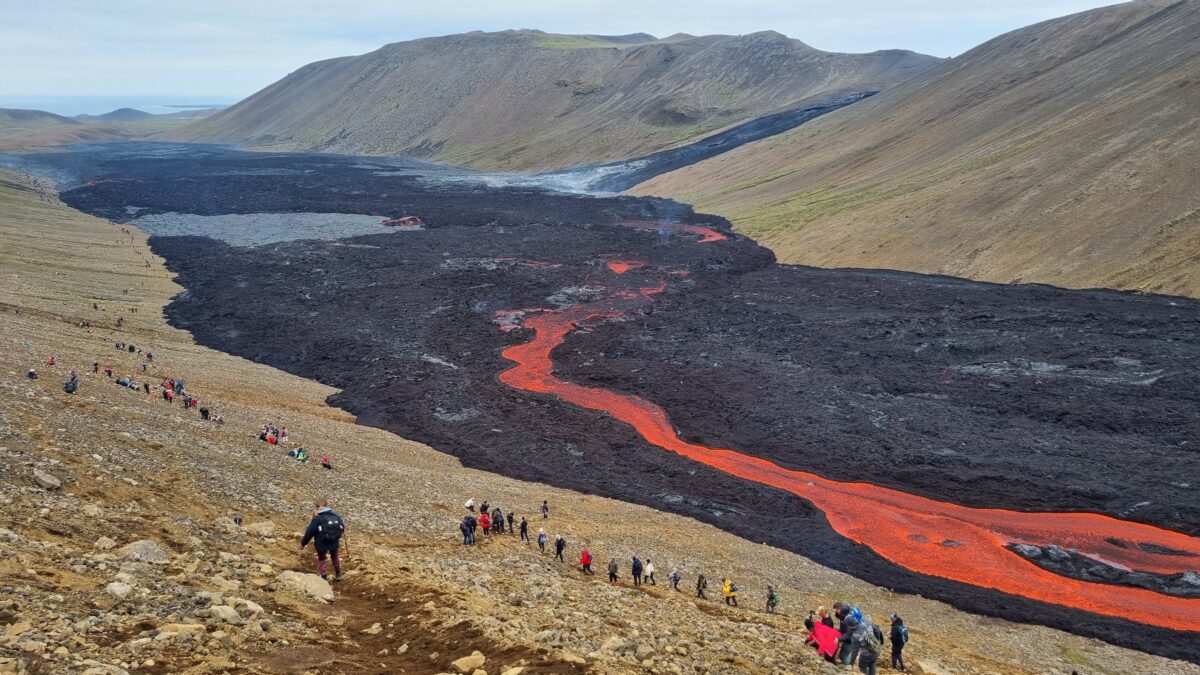Source: AGU Advances
Hundreds of millions of people live in areas that could be affected by volcanic eruptions. Fortunately, clues at the surface, such as earthquakes and ground deformation, can indicate movement within underground magma dikes—sheets of magma that cut across layers of rock. Scientists can use these clues to make potentially lifesaving predictions of eruptions.
But there is room for improvement. Eruption predictions rely on modeling magma dikes, and most models treat magma as a simple Newtonian fluid (like water) whose viscosity stays constant under stress. However, magma’s crystals and bubbles make it more likely to behave as a non-Newtonian fluid whose viscosity decreases under greater stress (known as shear thinning). That’s especially true as it approaches the surface. Ketchup behaves similarly: It pours more easily from a jar when shaken.
Lab experiments by Kavanagh et al. reveal new insights into the potential dynamics of non-Newtonian magma flow in dikes. These findings could ultimately help improve eruption prediction strategies.
To mimic magma dikes, the researchers injected various fluids into a translucent and elastic solid gelatin material representing Earth’s crust. The injected fluids contained suspended tracer particles that could be illuminated by laser light, allowing the researchers to track each fluid’s flow within the forming dike as it traveled up from the injection site to the surface, where it “erupted” from the gelatin. They compared the behaviors of two non-Newtonian shear-thinning fluids, hydroxyethyl cellulose (a thickener often found in cosmetics) and xanthan gum (a thickener often added to foods), to water, a Newtonian fluid.
The experiments showed that the flow patterns of these fluids were very different from the flow patterns of water. However, even though their internal flow patterns differed, all fluids formed dikes with a similar shape and speed as they approached the surface.
These findings suggest that the primary information currently used to predict impending eruptions—such as the shape and speed of magma dikes—does not necessarily correlate with information about magma flow dynamics within the dikes. This result is significant because flow dynamics depend on magma characteristics that can affect how explosive an eruption will be or how quickly or how far the lava will travel.
Further research could help link these findings to real-world geological evidence and explore how they might help to improve eruption forecasting, the researchers say. (AGU Advances, https://doi.org/10.1029/2024AV001495, 2025)
—Sarah Stanley, Science Writer


